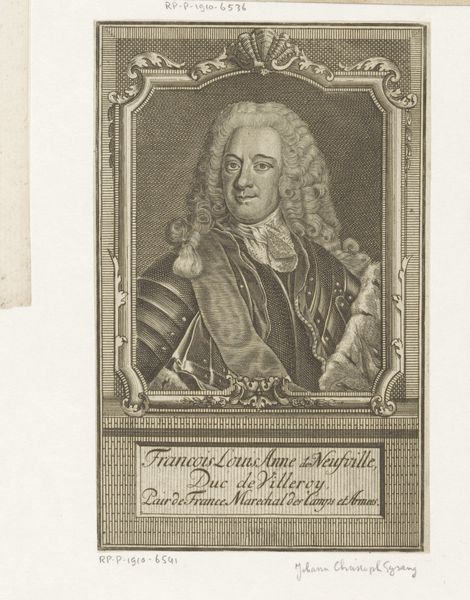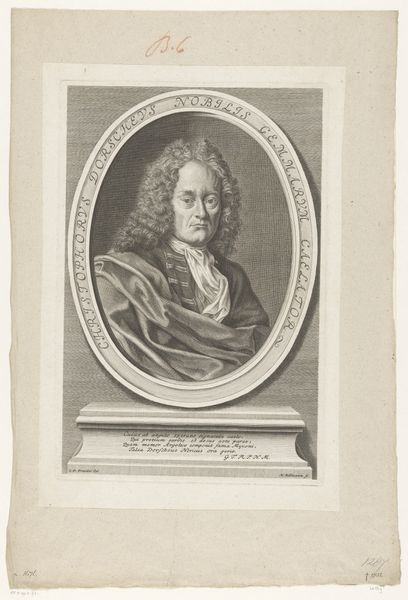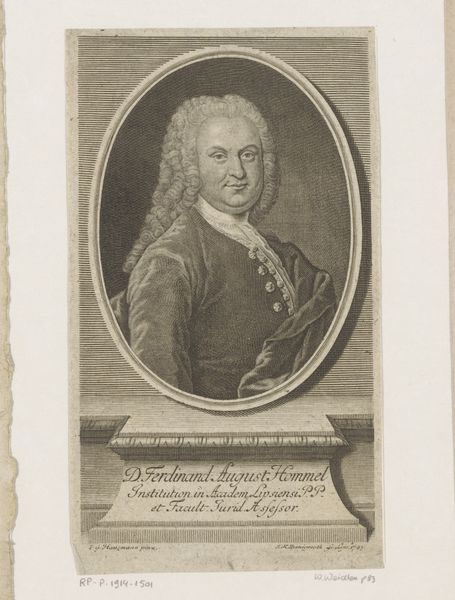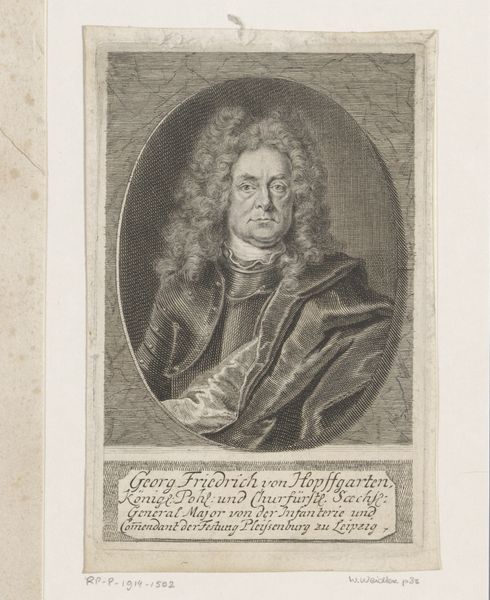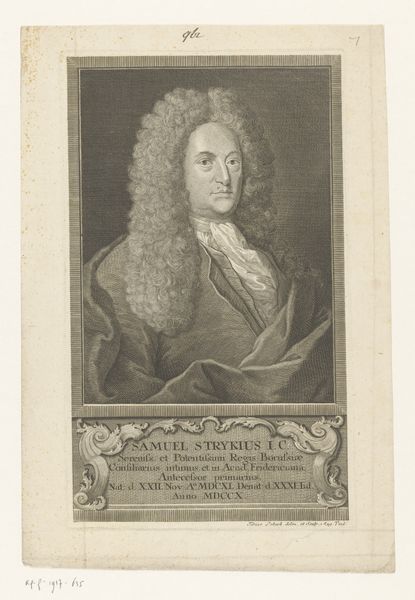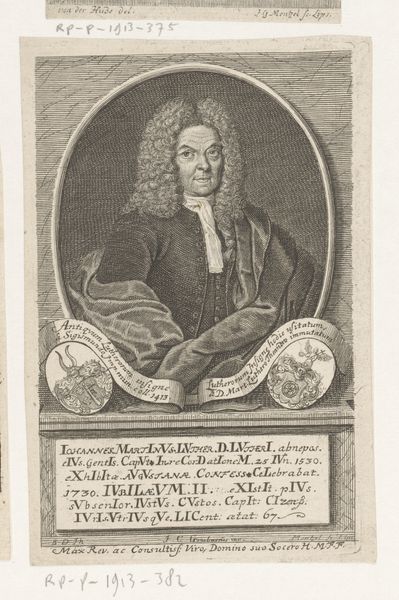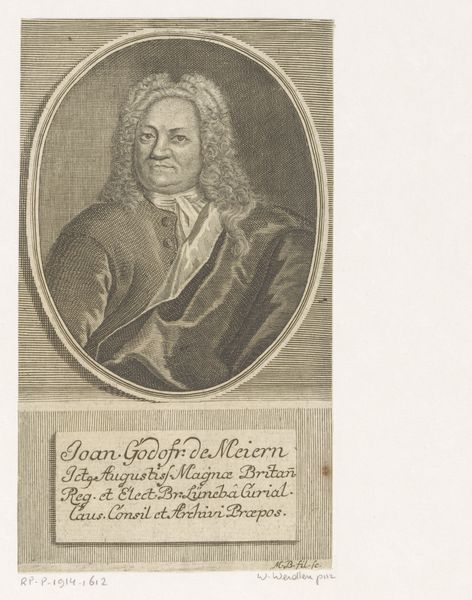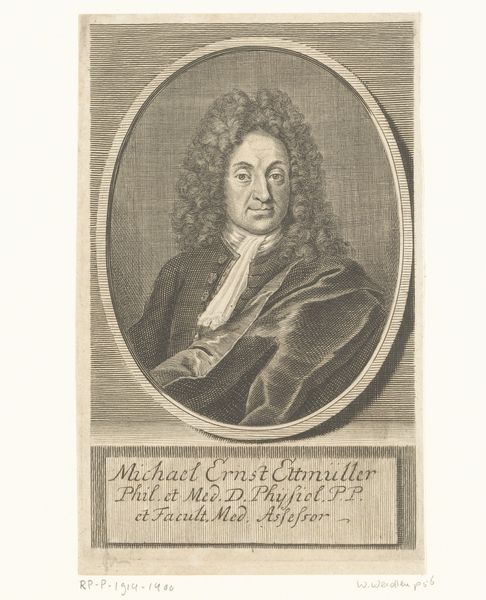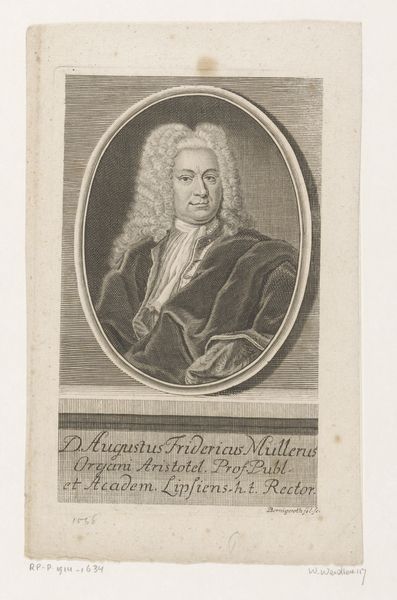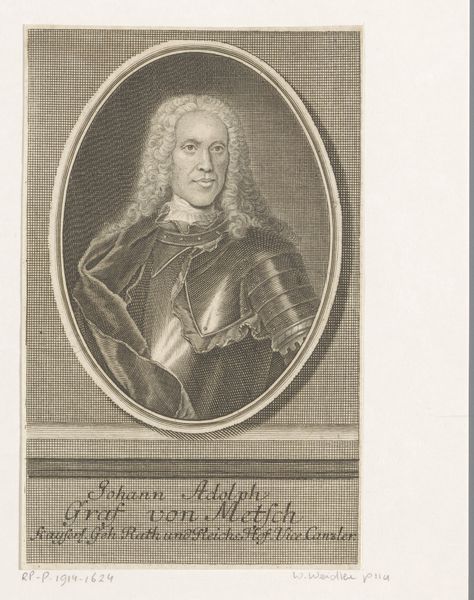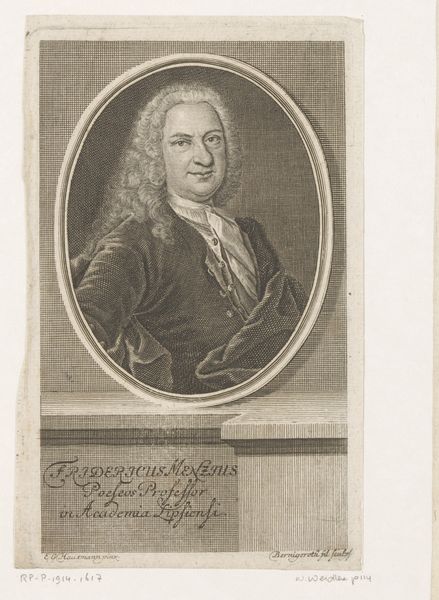
print, engraving
#
portrait
#
aged paper
#
baroque
# print
#
old engraving style
#
pencil drawing
#
old-timey
#
northern-renaissance
#
engraving
Dimensions: height 159 mm, width 97 mm
Copyright: Rijks Museum: Open Domain
Editor: This is Johann Martin Bernigeroth's "Portret van Johann Adolph Wedel," created in 1737. It’s an engraving, currently held at the Rijksmuseum. The level of detail the artist achieved with simple lines is fascinating. How would you interpret this work, especially considering its historical context? Curator: Well, what immediately strikes me is the power embedded in portraiture of this era. This image isn't simply a likeness; it’s a statement of social and intellectual standing. Wedel was a physician and professor - his titles are inscribed. Consider how the Baroque style, even in print, emphasizes the subject's importance through controlled composition and deliberate detail. But what stories are *not* being told in this image? What perspectives are marginalized or completely absent from this elite portrayal? Editor: That's a compelling point. It makes you think about whose stories get told, and how art plays a role in perpetuating certain power structures. Do you see this portrait reflecting the political climate of Saxony at the time? Curator: Absolutely. The “Confit. Aul. Saxon.” indicates Wedel held a position at the Saxon court. Think about the systems of patronage in place, how artistic production was intrinsically linked to the ruling class, which naturally restricted which narratives found representation. Do you find this power dynamic influencing how we view the work today? Editor: Definitely. Recognizing this makes me see the portrait as less about the individual and more about the social framework that enabled him to be celebrated in this way. Curator: Precisely! It reveals how deeply entangled art is with politics and social status, especially in portraiture. It’s about peeling back layers of history and asking critical questions about representation, visibility, and power. Editor: I hadn't considered that perspective before, it truly changes the way I look at these older portraits. Curator: Exactly! By viewing the work as both a piece of art and an instrument that produces knowledge and cultural value, one can start to discern historical forces at play and examine these artworks using critical lenses.
Comments
No comments
Be the first to comment and join the conversation on the ultimate creative platform.
